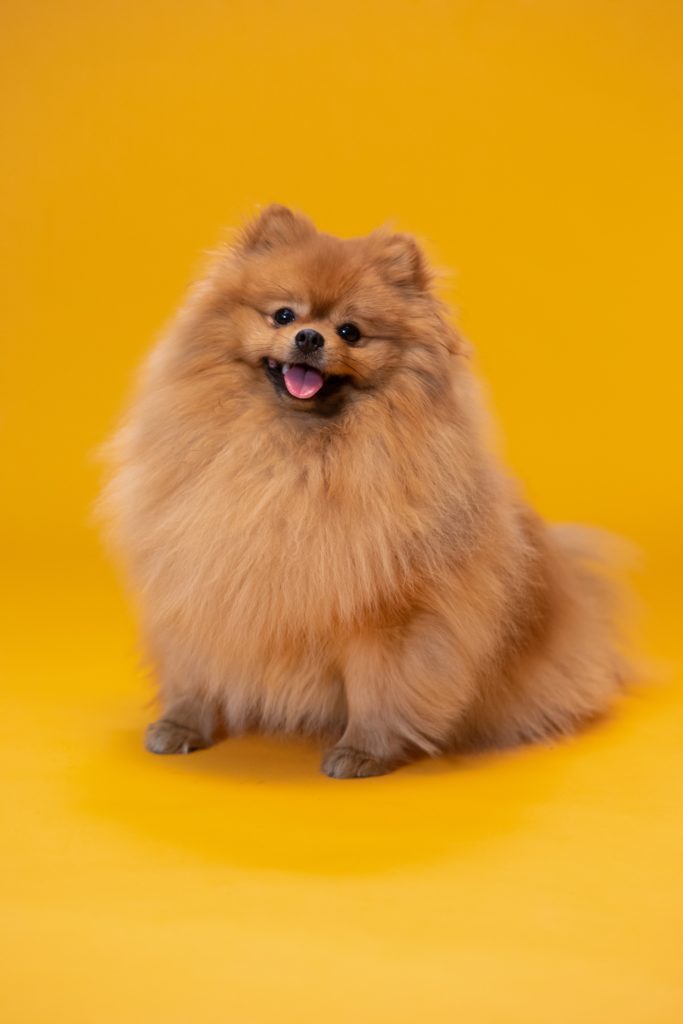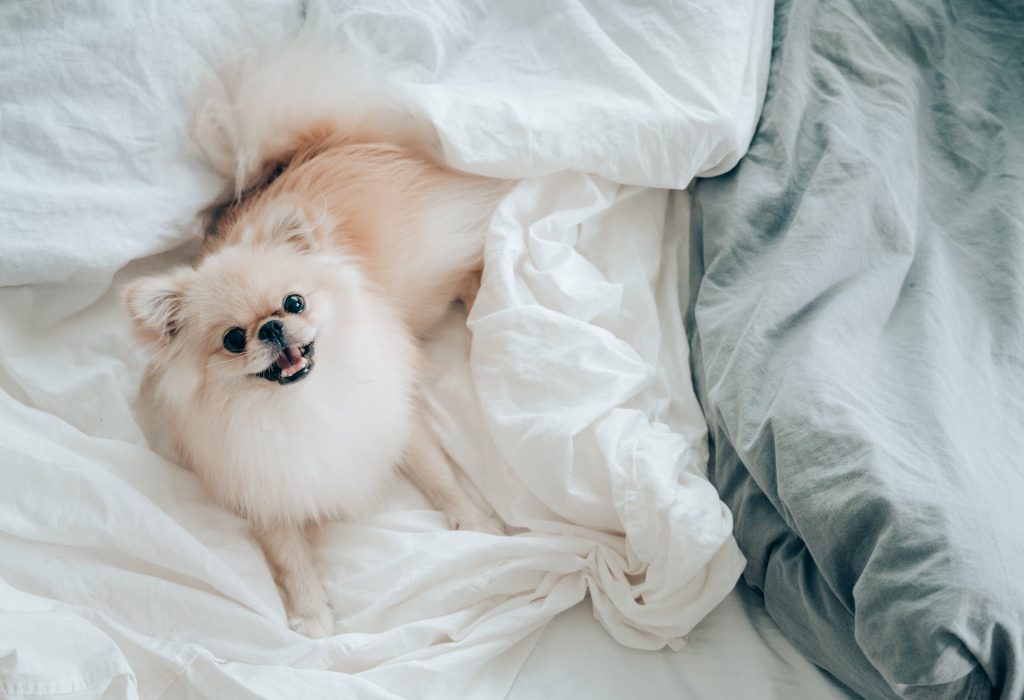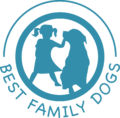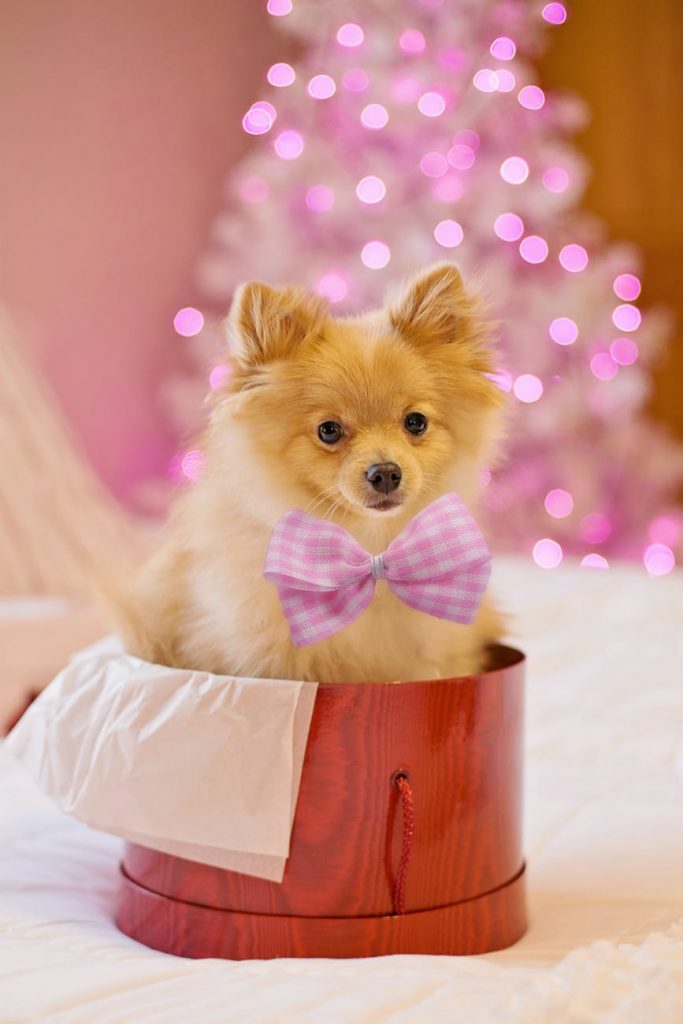Pomeranian dogs are a luxurious family-oriented breed. If your family is considering a dog, read on to learn what owning a Pomeranian is like. My article explores what kind of family environment best suits the Pomeranian, where the breed originated from and includes a section on health promotion.
Although, the “Pom-Pom” as they are affectionately called, is not currently on the list of best family dogs in 2020, this breed has been on previous years lists. Pomeranians have been through phases of popularity because of their gorgeous coat, and convenient size.

Raising a Pom-Pom in Your Family?
Pomeranian dogs make good family pets in families with older children, who understand responsibility and can assist in setting firm and consistent limits with the new dog.
The Pomeranian breed has one of the most independent personalities of all the breeds within the toy group. These dogs tend to be lively, inquisitive and energetic at the right times. Creating a unique bond between the dog and family. But also making the breed appropriate for apartment living if necessary.
This breed is known to have a docile temperament and be very affectionate with the family. They are eager to learn tricks and obedience. Generally Pomeranians are average in intelligence. Providing them with a “job” to do through trained activities further enforces this breeds sense of pride.
Pomeranians can get along well with other pets in the family when socialized properly and at a young age. They love people, and can be protective of their owners. Overall, this breed makes a good companion for older children and families and even more mature couples or the elderly.
Daily Exercise Requirements
Pomeranian dog breed require daily walks outdoors for at least half an hour. They can also get exercise through indoor and outdoor play. The most successful way to care for your Pomeranian dog exercise needs to provide a variety of indoor and outdoor activities on a regular basis that stimulate their mind as well as their body.

Daily Grooming Requirements
The Pomeranian dog breed does shed. They require daily brushing of their fur. The surface fur is shed and replaced daily, but they shed their cotton-soft undercoat twice a year.
Their eyes are prone to tear-staining or leaking and need to be whipped daily. Their ears also need occasional cleaning to avoid any risk of an ear infection.
Breed Traits and History
The Pomeranian, also known affectionately as the “Pom-pom” originated in Pomeranian, a region of central Europe which is part of Eastern Germany and northern Poland today. Pomeranians descended from large working dogs.
Queen Victoria made the breed popular in the 17th and 18th century as she had a red sable Pomeranian she named “Windor’s Marco” who weighted 12 lbs.
Queen Victoria worked to improve the Pomeranian by breeding them, and had effectively decreased their size by 50% over her lifetime of Pomeranian breeding.
The Pomeranian remained popular due to the small size and weight. Royalty of the time who owned Pomeranians included Josephine de Beauharnais, the wife of Napoleon I of France, and King George IV in England.
Pomeranians were recognized by the American Kennel Club for the first time in 1898.
Today, the Pomeranian is so popular because they come in the largest variety of colors of any other dog breed.
Pomeranian Health Promotion
Most dogs from a reputable shelter or breeder will be healthy. However, due to the Pomeranians unique size and color variations, some common health issues do occur.
- The Merle colored Pom-poms have the most health issues compared to other colored Pomeranians perhaps because of the extensive breeding that was required to obtain such a rare, desirable hue.
Any Pomeranian can be affected by:
- Luxating Patellas (sliding knee cap). Treatable through surgery, and temporary post-operative pain medication and perhaps short prophylactic course of antibiotics.
- Tracheal Collapse. Seems to be most common in young and older Pomeranians. The cartilage rings of the trachea become weak and can no longer keep the dog’s airway open. The result is respiratory distress and a “honk-like” cough. Treatment involves oxygen and medication, sometimes surgery. Depending on the severity of the condition and the age of the dog.
- Alopecia (hair loss) – The dog develops bald patches of skin which may become pigmented. The hair loss can be a result of other conditions that your veterinarian can assess and diagnosis. Alopecia has different treatments determined by the underlying cause of the hair loss and whether the hair is being lost at the shaft, follicle or root. Commonly, a topical cream is used to treat the skin.
- Hyper Pigmentation (darkening of the skin) – This darkening of the skin is usually a result of other underlying medical causes. Your veterinarian can assess, diagnosis and treat accurately.
All breeds are susceptible to specific disorders. Each breed can be affected to varying degrees. The idea of listing the common illnesses for each breed is not to discourage you from wanting a specific breed if you find it a perfect fit for your family; but to help you better prepare for the future health of your dog. As well as provide you with the knowledge necessary to get a dog in the best optimum health.
I encourage owners to develop a strong relationship with a consistent veterinarian who the owner and dog both can bond with. Adequate medical care is a financial expense, but a necessity for being a responsible dog owner.
Pomeranians As Family Dogs
Pomeranians love to be part of a family. They are sensitive and intuitive dogs. They prefer the indoors and being close to their family but they do want to go out to explore a couple of times a day. Their over-fluffy and soft appearance makes them exciting for kids of all ages. Pomeranian can tolerate children of all ages with supervision. Older children can assist with Pom-pom’s needs more independently which is helpful. Pomeranians need families who are willing to tolerate their grooming needs and can manage their barking. The Pomeranian is loud at times for such a small dog. Consistent training and exposure are helpful in showing your Pomeranian when it is and is not necessary to bark.
Overall, this small dog is well loved and adored by their families. A well cared for, well groomed Pomeranian even draws lots of public attention and it’s easy to see why!


